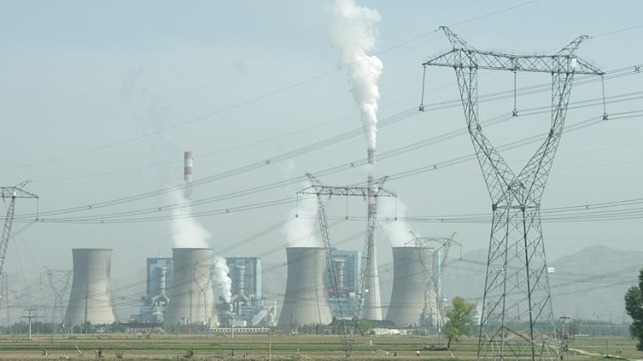Coal Shortage Cuts off Power in China's Industrial Heartland

Adding to the long list of this year's supply chain woes, manufacturers in some of China's busiest industrial hubs have reported government-mandated power shutoffs that are requiring many to curtail production or temporarily shut down.
The cause comes down to two policy choices: first, Beijing has refused to buy Australian coal, driving up its cost of energy; and second, China's leaders are intentionally forcing CO2 emissions cuts, despite the economic consequences.
Most of China's electrical power is supplied by coal plants, which are more carbon-intensive than any other form of power generation. As demand for Chinese manufactured goods soared this year, energy-hungry industries put additional stress on the grid, requiring more coal and more emissions. China's National Bureau of Statistics reported that power generation rose by 13 percent in the first seven months of the year, and almost all of the additional capacity came from coal-fired plants.
However, China has a self-imposed coal supply shortage. After Australia called for an international investigation into the origins of COVID-19 in Wuhan last year, Beijing quietly told Chinese traders to stop buying Australian coal. For more than 12 months, China's coal-consuming industries have had to look elsewhere and have been paying substantially more than usual for thermal coal. This raises costs for power plants, but due to government-mandated price caps, utilities cannot pass the increase in costs to their customers - making power-generation a money-losing business. Many plants are running below capacity for this reason, energy expert Lin Boqiang told the New York Times.
Local governments are also pressuring industrial energy consumers to meet annual climate targets under the so-called "dual control" carbon emissions reduction program, driven by Beijing's National Development and Reform Commission (NDRC). On September 16, the NDRC issued a new edict that announced long-term reduction targets for power-hungry industrial facilities in 10 major provinces. The "dual control system" aims to "firmly control energy-hungry and high-emissions projects" to attain President Xi Jinping's climate commitments. Beijing hopes to halt the growth of China's CO2 emissions by 2030, then cut emissions to net-zero by 2060.
"Localities and enterprises can use renewable energy power to bypass the assessment of total energy consumption, in exchange for more room for industrial development. This is expected to accelerate the adjustment in the country’s energy structure," explained TF Securities analyst Song Xuetao in comments to the South China Morning Post.

that matters most
Get the latest maritime news delivered to your inbox daily.
In the meantime, the power restrictions will have a short-term impact on the global supply chain.
“The power curbs will ripple through and impact global markets. Very soon the global markets will feel the pinch of a shortage of supply from textiles and toys to machine parts," analyst Ting Lu of Nomura told Bloomberg.
